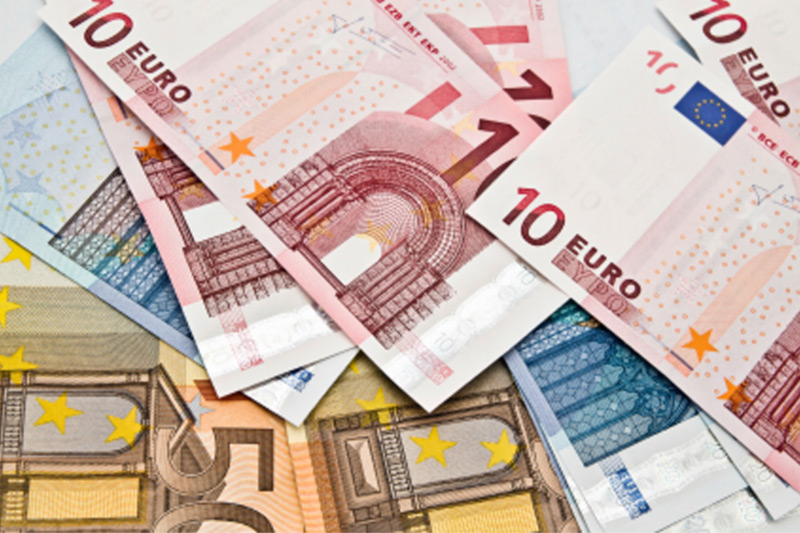Investing.com - The euro was trading in a tight range against its major counterparts on Thursday, after an auction of Spanish government debt met with solid investor demand, while expectations for more easing by the Federal Reserve also boosted demand higher-yielding assets.
During European late morning trade, the euro was fractionally lower against the U.S. dollar, with EUR/USD dipping 0.05% to hit 1.2575.
The euro found support after Spain’s Treasury successfully sold EUR2.07 billion of bonds, slightly more than the targeted amount, in an auction which met with solid investor demand, but saw borrowing costs rise.
The auction was viewed as a critical test of investor appetite for the country’s debt, coming just days after Spain warned that it was having difficulty accessing credit markets.
Sentiment on the greenback remained fragile as investors looked ahead to testimony by Federal Reserve Chairman Ben Bernanke on the outlook for the U.S. economy later in the day, amid speculation that the U.S. central bank is mulling new measures to stimulate growth.
Elsewhere, the single currency was higher against the yen, with EUR/JPY rising 0.22% to hit 98.83.
The euro was little changed against the pound and the Swiss franc, with EUR/GBP dipping 0.01% to hit 0.8118 and EUR/CHF inching up 0.05% to hit 1.2012.
In the U.K., data showed that the U.K. service sector grew faster than expected last month, matching the strong rate of growth seen in April.
The Markit/CIPS U.K. services purchasing managers' index came in at 53.3 in May, defying expectations for a decline to 52.7 and unchanged from the previous months reading.
Elsewhere, government data showed that consumer price inflation in Switzerland was flat in May, against expectations for a 0.1% increase.
The euro was mixed against the Canadian, Australian and New Zealand dollars, with EUR/CAD edging up 0.01% to hit 1.2928, EUR/AUD slipping 0.09% to hit 1.2661 and EUR/NZD easing up 0.07% to hit 1.6333.
The Australian dollar strengthened earlier after official data showed the country’s economy added 38,900 jobs in May, beating expectations for a 2,200 decline and following a 7,000 rise the previous month.
Australia’s unemployment rate ticked up to 5.1% from April’s 5.0% reading, in line with expectations.
Later Thursday, the U.S. was to release government data on initial jobless claims.
During European late morning trade, the euro was fractionally lower against the U.S. dollar, with EUR/USD dipping 0.05% to hit 1.2575.
The euro found support after Spain’s Treasury successfully sold EUR2.07 billion of bonds, slightly more than the targeted amount, in an auction which met with solid investor demand, but saw borrowing costs rise.
The auction was viewed as a critical test of investor appetite for the country’s debt, coming just days after Spain warned that it was having difficulty accessing credit markets.
Sentiment on the greenback remained fragile as investors looked ahead to testimony by Federal Reserve Chairman Ben Bernanke on the outlook for the U.S. economy later in the day, amid speculation that the U.S. central bank is mulling new measures to stimulate growth.
Elsewhere, the single currency was higher against the yen, with EUR/JPY rising 0.22% to hit 98.83.
The euro was little changed against the pound and the Swiss franc, with EUR/GBP dipping 0.01% to hit 0.8118 and EUR/CHF inching up 0.05% to hit 1.2012.
In the U.K., data showed that the U.K. service sector grew faster than expected last month, matching the strong rate of growth seen in April.
The Markit/CIPS U.K. services purchasing managers' index came in at 53.3 in May, defying expectations for a decline to 52.7 and unchanged from the previous months reading.
Elsewhere, government data showed that consumer price inflation in Switzerland was flat in May, against expectations for a 0.1% increase.
The euro was mixed against the Canadian, Australian and New Zealand dollars, with EUR/CAD edging up 0.01% to hit 1.2928, EUR/AUD slipping 0.09% to hit 1.2661 and EUR/NZD easing up 0.07% to hit 1.6333.
The Australian dollar strengthened earlier after official data showed the country’s economy added 38,900 jobs in May, beating expectations for a 2,200 decline and following a 7,000 rise the previous month.
Australia’s unemployment rate ticked up to 5.1% from April’s 5.0% reading, in line with expectations.
Later Thursday, the U.S. was to release government data on initial jobless claims.
